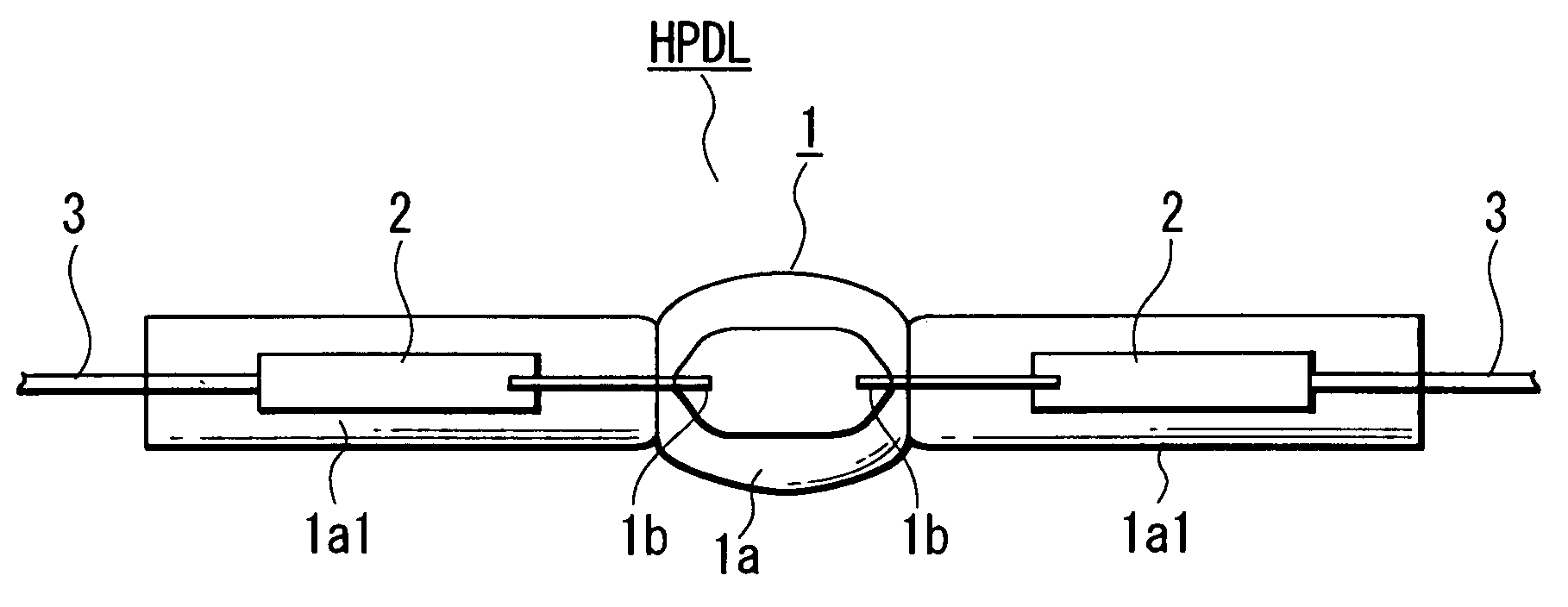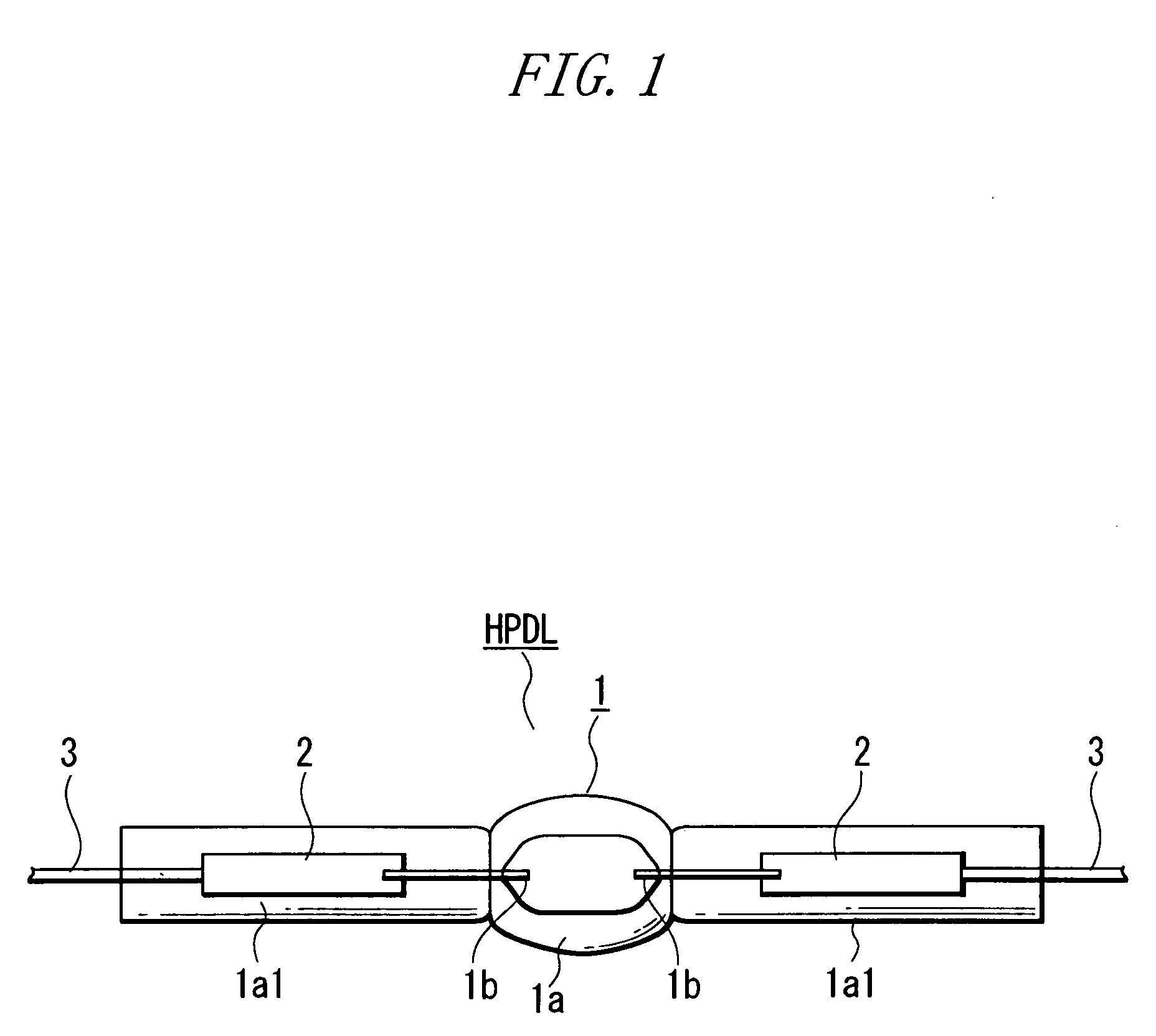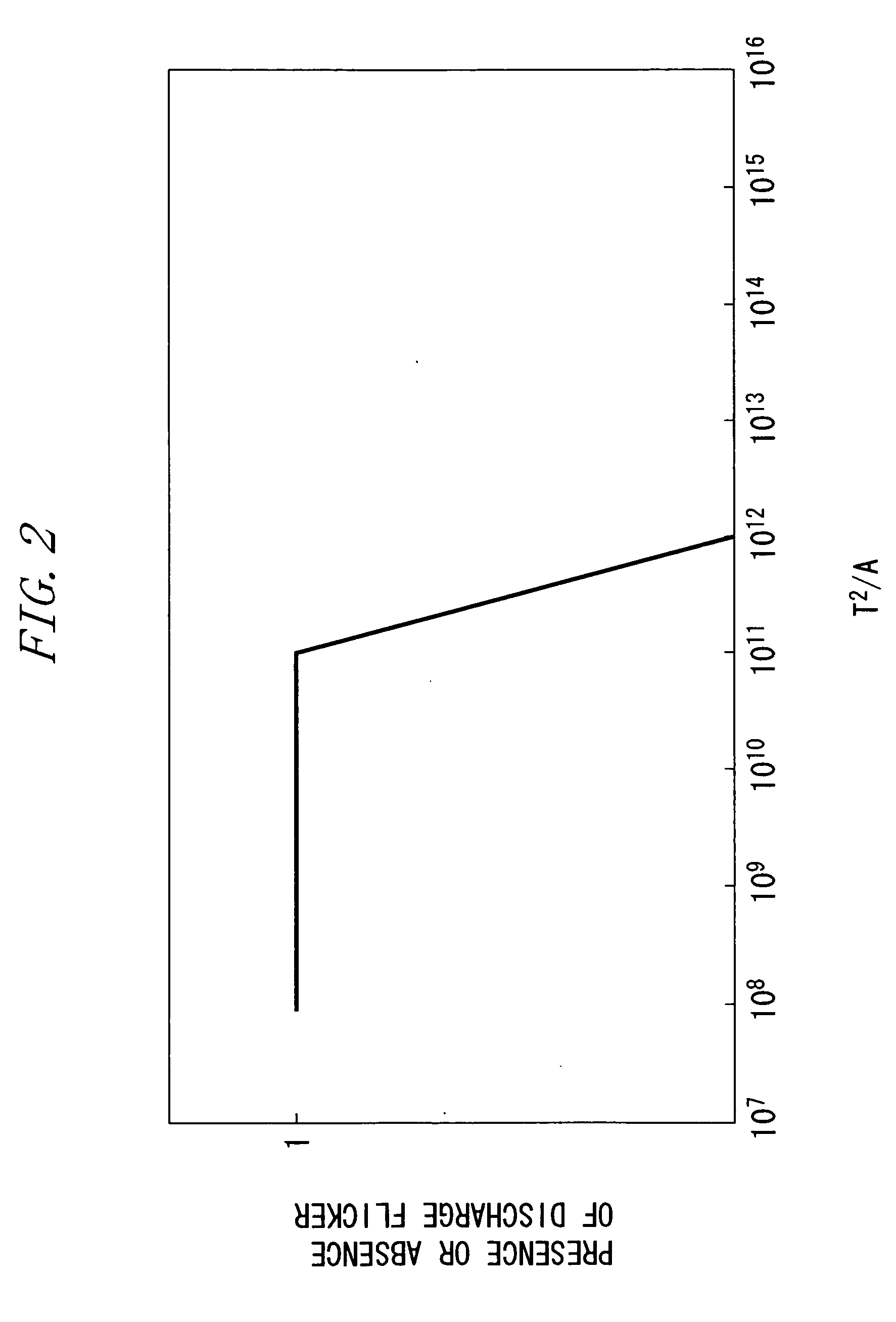High-pressure discharge lamp, high-pressure discharge lamp lighting device and automotive headlamp apparatus
- Summary
- Abstract
- Description
- Claims
- Application Information
AI Technical Summary
Benefits of technology
Problems solved by technology
Method used
Image
Examples
example 1
Discharge Vessel (1)
The hermetic vessel (1a) was made of quartz glass and had an outer diameter of 6 mm, an inner diameter of 2.7 mm.
The electrodes (1b) were made of tungsten, the tip ends thereof had a diameter of 0.4 mm, and the length of the parts thereof protruding into the discharge vessel was 2.3 mm.
Discharge Medium
The halides used were ScI3, NaI and ZnI2 in a relation of ScI3−NaI−ZnI2=0.2 mg.
Xenon was at 6 atmospheres.
The halogen getter used was 0.01 mg of Sc or Sb.
The lamp power in a stable state was 35 W.
The electrode temperature was 1900° C. at a point at a distance of 0.3 mm from the tip end.
The amount A of free iodine produced during 100 hours of on-time was 0.5×10−6 (mol / cc).
The value of T2 / A was 7.22×1012.
Now, with reference to FIGS. 2 to 4, relationship among the electrode temperature T (° C.), the amount A of free iodine produced (mol / cc) and the occurrence of discharge flicker will be described.
FIG. 2 shows whether the discharge flicker occur...
example 2
Discharge Vessel (1)
The hermetic vessel (1a) was made of quartz glass and had an inner volume of 0.025 cc, and the maximum inner diameter of the discharge space was 2.4 mm.
The electrodes (1b) were made of tungsten and had a diameter of 0.40 mm, the length of the protruding part was 1.6 mm, and the distance between the electrodes was 4.2 mm.
Discharge Medium
The halides used were ScI3, NaI and ZnI2 in a relation of ScI3−NaI−ZnI2=0.3 mg.
Xenon was at 10 atmospheres.
The lamp power immediately after the turn-on was 85 W, and the lamp power in the stable state was 35 W.
The lamp current immediately after the turn-on was 2.8 A, and the lamp current in the stable state was 0.8 A.
The electrode temperature was 1800° C. at a point at a distance of 0.3 mm from the tip end.
Now, with reference to FIG. 5, relationships between the electrode temperature in the stable state and the occurrence rate of discharge flicker and between the electrode temperature in the stable state and the ...
PUM
 Login to View More
Login to View More Abstract
Description
Claims
Application Information
 Login to View More
Login to View More - R&D
- Intellectual Property
- Life Sciences
- Materials
- Tech Scout
- Unparalleled Data Quality
- Higher Quality Content
- 60% Fewer Hallucinations
Browse by: Latest US Patents, China's latest patents, Technical Efficacy Thesaurus, Application Domain, Technology Topic, Popular Technical Reports.
© 2025 PatSnap. All rights reserved.Legal|Privacy policy|Modern Slavery Act Transparency Statement|Sitemap|About US| Contact US: help@patsnap.com



